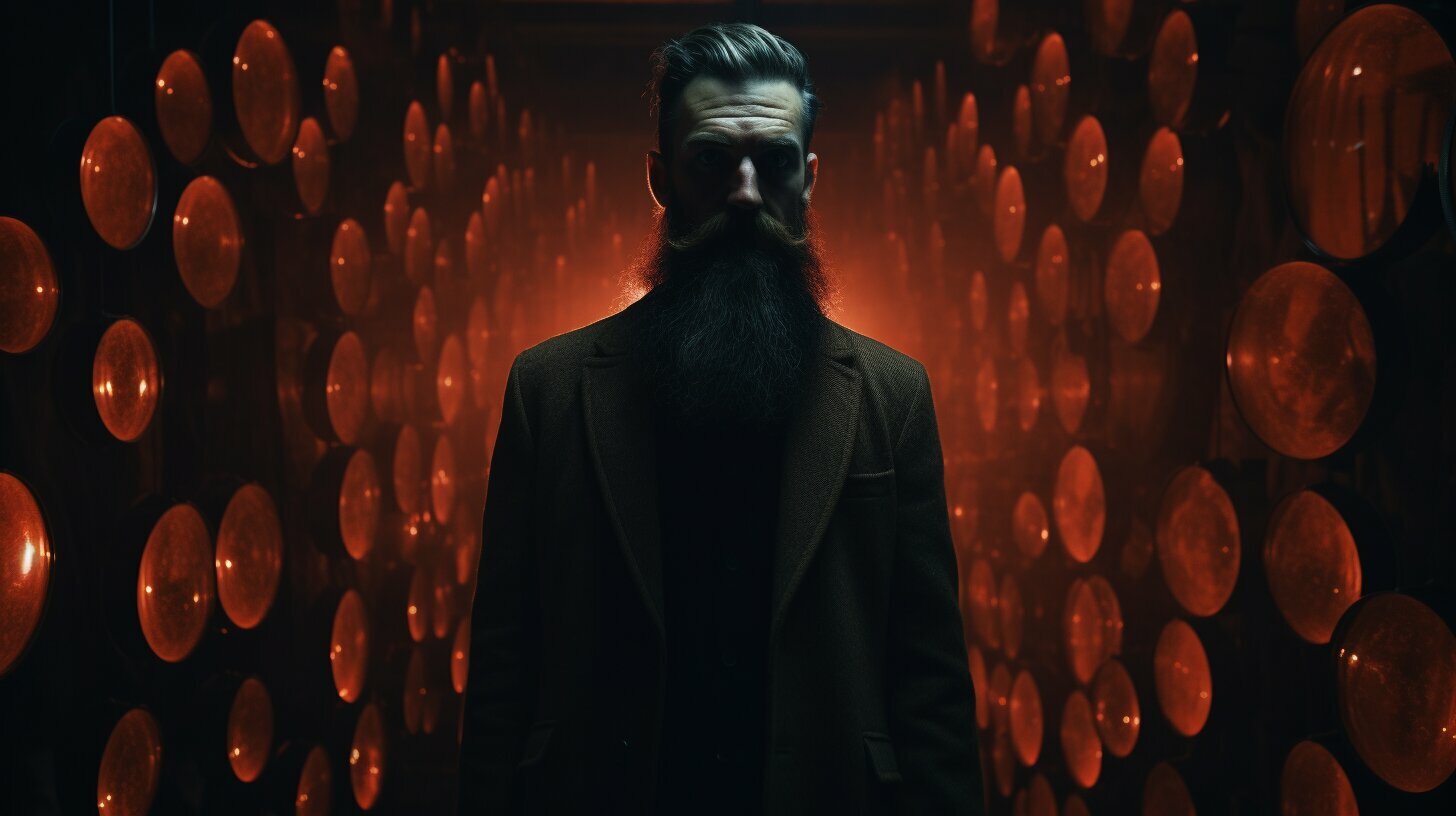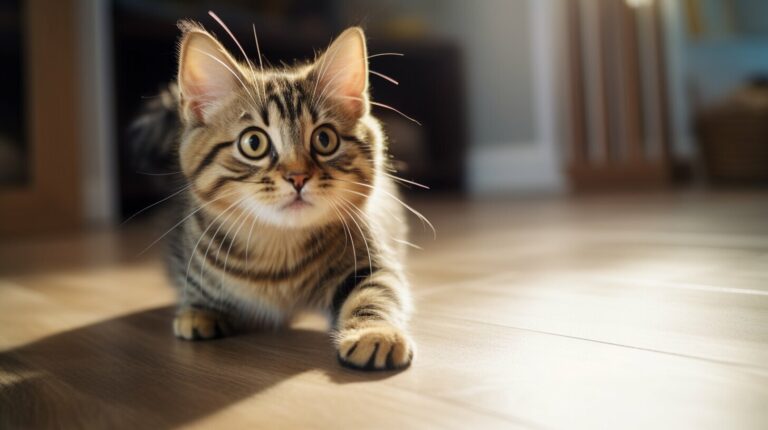Unraveling the Mystery: Why Do I Have Red Hairs in My Black Beard?
Have you ever wondered why you have red hairs in your black beard? It’s a fascinating phenomenon that can make your beard all the more distinctive and special. The presence of red hairs in a black beard is due to a recessive gene called MC1R. This gene triggers a mutation in your body, affecting the production of melanin and resulting in the production of redder colors. While factors such as age, sun exposure, stress, and certain soaps or shampoos can also influence beard color, the genetic component remains a significant factor.
Key Takeaways:
- The presence of red hairs in a black beard is caused by the MC1R gene and its effect on hair pigmentation.
- Factors like age, sun exposure, stress, and product usage can also contribute to beard color variation.
- Managing red hairs in your black beard can be done through trimming, styling, or dyeing.
- Embracing your unique beard color is important, as it is determined by your genetics.
- Proper beard care, including regular trimming, conditioning, and the use of beard oil, can help maintain a well-groomed appearance.
Understanding the Science: MC1R Gene and Hair Pigmentation
The presence of red hairs in your black beard can be attributed to a recessive gene called MC1R, which causes a mutation in your body’s hair pigmentation process. This gene affects the production of melanin, the pigment responsible for hair color, resulting in the production of redder colors. It’s fascinating to think that this small genetic variation can lead to such a unique and eye-catching beard color variation.
Research has shown that individuals with a black beard and red hairs possess a specific variant of the MC1R gene. This variant alters the way melanin is produced and distributed in the hair, resulting in the appearance of red strands among the black hairs. While the exact mechanisms behind this process are still being studied, scientists believe it has to do with the interaction between the MC1R gene and other pigmentation-related genes.
It’s important to note that other factors can also influence the color of your beard hair. Age, for example, can lead to the gradual graying or lightening of hair, including the appearance of red strands. Sun exposure can bleach the hair, causing it to appear lighter or even develop reddish tones. Stress has also been associated with premature graying. Additionally, the use of certain soaps or shampoos can affect the color and texture of your beard hair.
Factors Influencing Beard Color Variation
| Factors | Influence on Beard Color |
|---|---|
| Age | Gradual graying or lightening of hair, potential appearance of red strands |
| Sun Exposure | Lightening of hair, possible development of reddish tones |
| Stress | Premature graying |
| Soap or Shampoo | Affects color and texture of beard hair |
While you may not be able to prevent or stop the growth of red hairs in your black beard, there are ways to manage them and embrace your unique beard color. Some individuals choose to pull out or trim the red hairs, while others incorporate the color variation into their beard style. If you prefer a more uniform color, dyeing your beard can be an option. Just remember to choose a color that suits your skin tone and follow the instructions carefully.
Ultimately, it’s crucial to celebrate your unique beard color, as it is determined by your genetics. Your black beard with red hairs is a testament to your individuality. Alongside managing the color variation, it’s essential to practice proper beard care. Regular trimming, conditioning, and the use of beard oil can help maintain a well-groomed appearance, maximizing the impact of your distinctive beard color.
Factors Influencing Beard Color Variation
While the MC1R gene is primarily responsible for the presence of red hairs in your black beard, other factors such as age, sun exposure, and stress can also play a role in determining your beard’s color variation.
As I mentioned earlier, the MC1R gene triggers a mutation that affects hair pigmentation, resulting in the production of red hues. However, this genetic predisposition is not the only factor at play. The natural process of aging can lead to changes in hair color, including the appearance of red hairs in a black beard. The production of melanin, the pigment responsible for hair color, can diminish with age, leading to hair strands with different colors.
Sun exposure is another factor that can influence the color of your beard hair. The harmful UV rays from the sun can damage the hair follicles and alter the production of melanin. This can result in the appearance of red hairs in a black beard, particularly in individuals who spend a significant amount of time in the sun without adequate protection.
Stress, both physical and emotional, can also contribute to beard color variation. Stressful situations trigger physiological changes in the body, including the release of stress hormones. These hormones can affect the production of melanin and lead to changes in hair color. It is not uncommon for individuals experiencing high levels of stress to notice the emergence of red hairs in their black beards.
Other Factors
In addition to age, sun exposure, and stress, there are other potential factors that can influence beard color variation. The use of certain soaps or shampoos that contain chemicals or harsh ingredients may affect the pigmentation of your beard hair. It’s important to choose beard care products that are gentle and specifically formulated for facial hair to minimize any potential color changes.
| Factors Influencing Beard Color Variation | Effects |
|---|---|
| MC1R gene mutation | Red hairs in black beard |
| Aging | Changes in hair color |
| Sun exposure | Damage to hair follicles, altered melanin production |
| Stress | Hormonal changes affecting melanin production |
| Use of certain soaps or shampoos | Potential color changes |
While it may not be possible to prevent or stop the growth of red hairs in your black beard, there are ways to manage them. If the appearance of red hairs bothers you, you can consider gently pulling them out or trimming the beard to maintain a neater appearance. Styling techniques can also help incorporate the variation into your overall beard look. For those who prefer a uniform color, dyeing the beard can be an option. Just make sure to choose a quality beard dye and follow the instructions carefully to achieve the desired result.
Remember, your unique beard color is determined by your genetics and should be embraced and celebrated. Taking proper care of your beard, such as regular trimming, conditioning, and using beard oil, can help maintain a well-groomed appearance and enhance your confidence. So, whether you have a black beard with red strands or any other color variation, wear it proudly and showcase your individuality!
Managing Red Hairs in Your Black Beard
If you find the red hairs in your black beard bothersome, there are several ways you can manage them and maintain a well-groomed appearance. While it may not be possible to prevent or stop the growth of these red hairs, there are practical solutions to help you embrace and take control of your unique beard color.
“You can manage your red hairs by pulling them out, trimming or styling your beard, or even dyeing it.”
If you prefer a uniform beard color, you can try pulling out the red hairs individually. However, be cautious as this can potentially cause discomfort or irritation. Alternatively, you can opt for regular trimming to keep the red hairs at a manageable length, blending them with the rest of your black beard. Styling techniques, such as grooming products and beard balms, can help you shape and tame your beard, concealing any color variation.
If you’re looking for a more permanent solution to maintain a consistent beard color, consider dyeing your beard. You can either dye the entire beard to match your black hair or choose a shade that complements the red hairs, creating a stylish and intentional look. Just make sure to choose a high-quality beard dye specifically formulated for facial hair, and follow the instructions carefully to achieve the desired result.
Proper beard care is essential to enhance your overall appearance and confidence, regardless of your beard color.
- Regularly trim your beard to maintain a neat and well-groomed look.
- Condition your beard to keep it soft, moisturized, and manageable.
- Use beard oil to promote healthy hair growth and add a subtle shine.
- Protect your beard from sun exposure by wearing a hat or applying a beard-specific sunscreen.
Remember, your beard color is determined by your genetics, and there’s no need to be self-conscious about the presence of red hairs in your black beard. Embrace your unique beard color as a reflection of your individuality and take pride in it. With proper care and management, you can maintain a well-groomed appearance that exudes confidence and style.
| Beard Care Tips: | Benefits: |
|---|---|
| Regular trimming | Maintains a neat and well-groomed look |
| Conditioning | Keeps beard soft, moisturized, and manageable |
| Beard oil | Promotes healthy hair growth and adds shine |
| Sun protection | Prevents sun damage to the beard |
Embracing Your Unique Beard Color
Your black beard with red hairs is a beautiful testament to your individuality, and embracing its uniqueness can be a powerful form of self-expression. The presence of red hairs in a black beard is due to a recessive gene called MC1R, which triggers a mutation that affects the pigmentation of your hair strands. This gene disrupts the production of melanin, resulting in the production of redder colors.
Factors Influencing Beard Color Variation
Apart from genetics, there are other factors that can influence the color of your beard hair. Age, sun exposure, stress, and even the use of certain soaps or shampoos can impact the hue of your facial hair. As we age, our hair follicles produce less melanin, which can lead to the appearance of gray or red hairs. Exposure to the sun’s UV rays can also lighten or redden your beard color, especially if you spend a lot of time outdoors. Additionally, stress can affect your body’s hormone levels, which in turn may alter the pigmentation of your beard.
Managing Red Hairs in Your Black Beard
While there is no way to prevent or stop the growth of red hairs in your black beard, there are ways to manage and embrace them. If you’re not a fan of the variation, you can choose to pull out or trim the red hairs to create a more uniform look. Alternatively, you can embrace the uniqueness of your beard by styling it in a way that incorporates the red strands. If you prefer a uniform color, dyeing your beard can be an option. Just make sure to choose a high-quality product and follow the instructions carefully to achieve the desired result. Remember, proper beard care is essential regardless of your beard color. Regular trimming, conditioning, and using beard oil can help maintain a well-groomed appearance, enhancing the overall look and confidence that your black beard with red hairs brings.
| Factors Influencing Beard Color Variation | Management Tips |
|---|---|
| Age | Embrace the natural aging process and consider trimming or dyeing if desired. |
| Sun Exposure | Protect your beard from excessive sun exposure or embrace a sun-kissed look by adjusting grooming routines and using beard products with UV protection. |
| Stress | Practice stress-management techniques and prioritize self-care to minimize the impact on beard color. |
| Soaps/Shampoos | Opt for beard-specific products and avoid those that may contain harsh chemicals or irritants that can affect beard color. |
Conclusion
Embracing the red hairs in your black beard is not only a celebration of your unique genetics but also a way to confidently express your individuality. The presence of red hairs in your beard is caused by a recessive gene called MC1R, which triggers a mutation in your body and affects hair pigmentation. This mutation alters the production of melanin, resulting in the production of redder colors.
While you may wonder why you have red hairs in your black beard, it’s important to understand that genetics play a significant role in determining your beard color. Factors such as age, sun exposure, stress, and the use of certain soaps or shampoos can also influence the color of your beard hair. However, there is no foolproof way to prevent or stop the growth of red hairs in your black beard.
To manage the red hairs in your black beard, you can consider pulling them out, trimming or styling your beard to incorporate the variation, or dyeing it a uniform color. Remember, though, that your unique beard color is a result of your genetics and should be celebrated. Embrace the variation and confidently rock your black beard with red strands.
Proper beard care is essential to maintain a well-groomed appearance. Regular trimming, conditioning, and the use of beard oil can help keep your beard looking its best. Take pride in your unique beard color and let it be a symbol of your individuality. After all, your black beard with red hairs is what sets you apart and makes you one of a kind.
FAQ
Why do I have red hairs in my black beard?
The presence of red hairs in a black beard is due to a recessive gene called MC1R that triggers a mutation in your body, changing the pigmentation of some hair strands. This gene affects the production of melanin, resulting in the production of redder colors. Other factors such as age, sun exposure, stress, and the use of certain soaps or shampoos can also influence the color of your beard hair.
Is there a way to prevent or stop the growth of red hairs in my black beard?
Unfortunately, there is no known way to prevent or stop the growth of red hairs in your black beard. However, you can manage them by pulling them out, trimming or styling the beard to incorporate the variation, or dyeing it a uniform color.
How can I manage the red hairs in my black beard?
To manage the red hairs in your black beard, you can pull them out, trim or style the beard to incorporate the variation, or dye it a uniform color. It’s important to embrace and celebrate your unique beard color, as it is determined by your genetics. Proper beard care, such as regular trimming, conditioning, and using beard oil, can also help maintain a well-groomed appearance.
Why is it important to embrace my unique beard color?
Embracing your unique beard color is important because it reflects your individuality and is determined by your genetics. Your beard color is a part of who you are, and celebrating it can help boost your confidence and self-acceptance.
How can I enhance the appearance of my beard?
To enhance the appearance of your beard, it’s important to practice proper beard care. This includes regular trimming, conditioning, and using beard oil to keep your beard healthy and well-groomed. Embracing your unique beard color and styling it to incorporate any variations can also help enhance its overall appearance.






